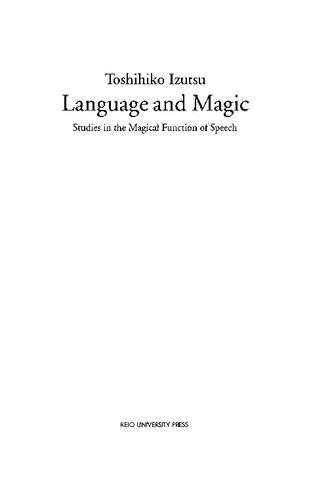

Most ebook files are in PDF format, so you can easily read them using various software such as Foxit Reader or directly on the Google Chrome browser.
Some ebook files are released by publishers in other formats such as .awz, .mobi, .epub, .fb2, etc. You may need to install specific software to read these formats on mobile/PC, such as Calibre.
Please read the tutorial at this link: https://ebookbell.com/faq
We offer FREE conversion to the popular formats you request; however, this may take some time. Therefore, right after payment, please email us, and we will try to provide the service as quickly as possible.
For some exceptional file formats or broken links (if any), please refrain from opening any disputes. Instead, email us first, and we will try to assist within a maximum of 6 hours.
EbookBell Team

5.0
68 reviews[This work was originally published in 1956 by the Keio Institute of Philological Studies (the predecessor to The Keio Institute of Cultural and Linguistic Studies)]
The present work does not claim to be anything more than a brief sketch, since limitations of space forced me to leave untouched many topics which might well have been included, and to select only those themes which seemed of the utmost importance for an investigation such as I proposed to make of the magical working of language. More than that, it was originally intended that I should write a few additional notes on the structure of Chinese language in order to illustrate by concrete examples some of the points developed in chapters [IV and VUI—concerning, in particular, the subject-predicate form of proposition and the historical formation of the parts of speech in Chinese. But I soon convinced myself that these were questions too large to be treated in that way, and that it was impossible to discuss them to my satisfaction without going too far afield for the purposes of this book. I have therefore decided to keep this discussion for a later day.
I fondly hope in a not too distant future to produce another work dealing especially with the structural characteristics of Chinese and the influence they have exerted on the ways of verbal thinking of Chinese people.
T. Izutsu
Tokyo, 1955